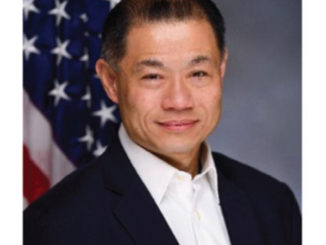
Guru Gobind Singh Ji, the tenth master of Sikhs, was born on January 5, 1667, as “Gobind Rai” at Patna Sahib, Bihar. He became Guru on November 24, 1675, at the age of nine, following the martyrdom of his father, the ninth Guru, Guru Tegh Bahadur Ji.
A divine messenger, a warrior, a poet, and a philosopher, Guru Gobind Singh Ji molded the Sikh religion into its present shape, with the institution of the Khalsa fraternity, and the completion of the sacred scripture, the Guru Granth Sahib Ji, in the final form that we find today. Before leaving his mortal body in 1708, Guru Gobind Singh decreed the Guru Granth Sahib Ji as the next and perpetual Guru of the Sikhs.
It may not be out of context to consider that throughout the chronicles of human history, there has been no individual who lived a life more inspirational than Guru Gobind Singh Ji. He is variously revered as Sarbans Dani (the merciful donor, who sacrificed his all), Mard Agamra (man without any parallels), Shah-e-Shahenshah (emperor of emperors), Bar do Alam Shah (ruler of both worlds), amongst others.
Among his notable contributions to Sikhism are founding the Sikh warrior community called Khalsa in 1699 and introducing the Five Ks, the five articles of faith that Khalsa Sikhs wear at all times. Guru Gobind Singh also continued the formalisation of the religion, wrote important Sikh texts, and enshrined the scripture the Guru Granth Sahib as Sikhism’s eternal Guru.
His essential motto was ‘manas ki jaat sab ek hi pahnchanbo’ – all of humankind has one caste. The ‘panj piyares’ (five beloved ones) who were initiated by Guru Gobind Singh into the Khalsa and drank amrit (nectar) from one bowl belonged to different castes – one was a Brahmin, another was a Kshatriya and the other three belonged to the then so-called lower castes.This was a message of social equality – a highly symbolic ritual in which all castes became one again.
The Guru born in Patna symbolises buoyant hope (carhdi kala) and an indefatigable spirit to wage a war for Dharam (righteousness). He was a spiritual leader and a prolific poet who gave a clarion call to embrace battle when the times demanded ‘shaheedi’ (the word has not been used by the Guru himself). That is the timelessness of his leadership – that is true ‘prakash’ (light). In his own words penned with reference to his father’s execution in Bichitra Natak:
“Dharam het saka jin kiya,
Sirr diya par sirarr na diya.”
Loosely paraphrased: “He was martyred for upholding Truth and Righteousness. He gave his head, but not his determination.”
Guru Gobind Singh’s contributions to the spiritual and theological lives of Sikhs in specific and Indians in general cannot be praised enough. At an intensely personal level, Guru Gobind Singh’s relevance stems from his valour and from the legitimacy he vested once again to war, to bravery and to giving up one’s life to uphold one’s Dharma (it is important to distinguish Dharma from religion). Love for all of humankind and destruction of oppressors can co-exist and do co-exist. Pacifism is not to be confused with cowardice; militancy spurred by malice or greed is not war for Dharma and raising of arms in the battlefield for the establishment of the fundamental principles of the Divine and humankind is not militancy. In our times, like in all of times when human beings have existed, raising of arms is both real and symbolic and wars are not waged for power and territory alone – they are also waged for change. India has always been a pacifist nation ready for war, we are capable of expounding the deepest of spiritual truths and also fighting the toughest of battles. That is the message which the life and teachings of Guru Gobind Singh reiterates.
A LEADER AMONG US
Gobind Rai, who would later be named as Guru Gobind Singh, was born to the ninth Guru of Sikhism, Guru Teg Bahadur and Mata Gujri at Patna Sahib or Takht Sri Patna Sahib (now in Patna).
SON OF A MARTYR
He was only nine when he became the Tenth Sikh Guru. He ascended after his father Guru Teg Bahadur accepted martyrdom in the hands of Mughal Emperor Aurangzeb to protect the Kashmiri Hindus.
SCHOLAR AND WARRIOR
As a child, Guru Gobindh Singh learned many languages including Sanskrit, Urdu, Hindi, Braj, Gurmukhi and Persian. He also learned martial arts to become adept in combat.
Guru Gobindji’s hometown was the city of Anandpur Sahib in the present Rupnagar disrict in Punjab. He left the town due to a scuffle with Bhim Chand and proceeded to Nahan, a place in the hills of Himachal Pradesh, following an invitation of Mat Prakash, the king of Sirmaur. From Nahan, Guru Gobind Singh proceeded to Paonta, a town beside the river Yamuna in South Sirmaur, Himachal Pradesh. There, he founded the Paonta Sahib Gurudwara and preached about the Sikh principles. Paonta Sahib remains an important pilgrim site for Sikhs. Guru Gobindji also wrote texts and had a substantial number of followers within three years, the time he spent there.
A FIGHTER
In September 1688, at the age of 19, Guru Gobind Singh fought the Battle of Bhangani against an allied force of Bhim Chand, Garwal king Fateh Khan and other local kings of the Sivalik Hills. The battle lasted for a day and thousands of lives were lost. The Guru came out victorious. A description of the battle can be found in Bichitra Natak or Bachittar Natak, a part of the Dasham Granth, which is a religious text attributed to Guru Gobind Singh.
In November 1688, Guru Gobind returned to Anandpur, which became known as Chak Nanaki, agreeing upon an invitation from the dowager queen of Bilaspur.
FOUNDER OF KHALSA
In 1699, Guru Gobind Singh gathered his followers to his home in Anadpur. He asked for a volunteer to sacrifice his head for his brothers. Daya Ram offered his head and the Guru took him inside a tent and later emerged with a bloody sword. He again asked for a volunteer and repeated the feat. This went on for three more times. At last, Guru emerged from the tent with the five volunteers and five headless goats were found in the tent. These five Sikh volunteers were named as Panj Pyaare or ‘five beloved ones’ by the Guru.
The five volunteers were Daya Ram, also known as Bhai Daya Singh; Dharam Das, also known as Bhai Dharam Singh; Himmat Rai, also known as Bhai Himmat Singh; Mohkam Chand, also known as Bhai Mohkam Singh; and Sahib Chand, also known as Bhai Sahib Singh. They were the first Sikhs.
At the gathering of 1699, Guru Gobind SIngh founded the Khalsa Vani – “Waheguru ji ka Khalsa, Waheguru ji ki fateh”. He named all his followers with the title Singh, meaning lion. He also founded the principles of Khalsa or the Five ‘K’s.
After repeated conflicts with Garwali and Mughal leaders, Guru Gobind Singh wrote a letter to Aurangzeb in Persian, which was later famously named as Zafarnama or the Epistle of Victory, reminding him of the misdeed the Mughals had done to the Sikhs. He fought against the Mughals later in battle of Muktsar in 1705.
After Aurangzeb’s death, Guru Gobind Singh no longer remained an adversary to the Mughals. The next Mughal emperor, Bahadur Shah was friendly with Guru Gobind at first. He even named the Guru as Hind Ka Pir or the Saint of India. But later on, Bahadur Shah was influenced by Wazir Khan, Nawab of Sirhind, to attack the Sikh community. Wazir Khan sent two Pathan assassins Jamshed Khan and Wasil Beg to attack the Guru during his sleep at Nanded, the Guru’s resting place. They stabbed Guru Gobind Singh in his sleep. The Guru killed Jamshed, the attacker, with his sword, while other Sikh brothers killed Beg. Guru Gobind Singh named Guru Granth Sahib, the religious text of the Khalsas and the Sikhs, as the next Guru of the two communities. He left his bodily form and on October 7 in 1708.





Be the first to comment